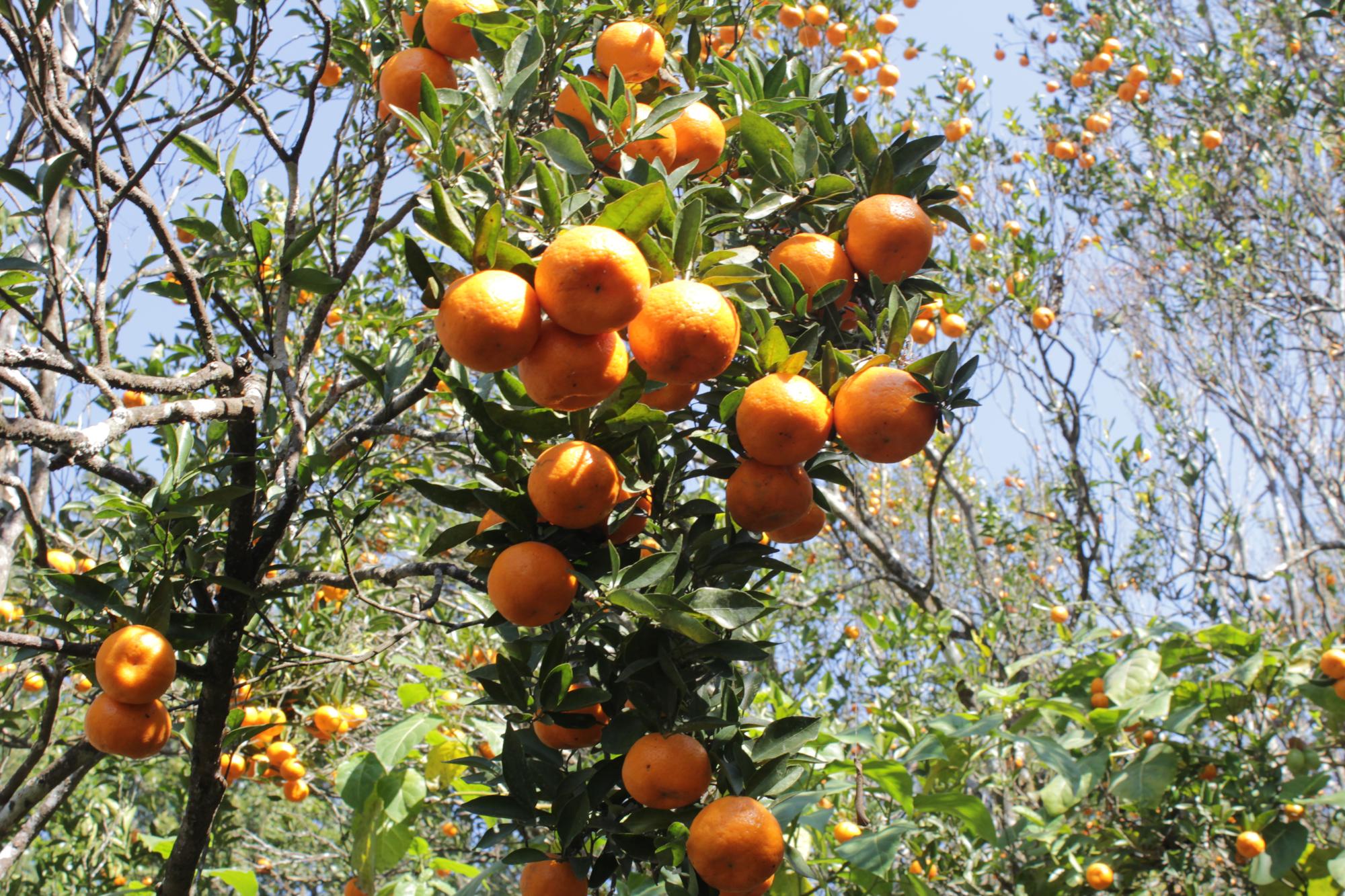Argentina and Chile declared Mediterranean fruit fly free with help of nuclear technology
In the north of the country, at Arica, Chile is producing sterile flies to be released over areas at risk of outbreaks in the Metropolitan Region of Santiago.

In 2019, twenty-four years after Chile declared itself Mediterranean fruit fly (medfly) free, the country experienced one of its largest outbreaks — costing the economy approximately US$ 5 million. Worried about future outbreaks, which are caused by the movement of people and fruit from countries where the medfly is present, in 2020 Chile’s Agricultural and Livestock Service (SAG), in collaboration with Argentina’s National Food Safety and Quality Service (SENASA), the IAEA and the Food and Agriculture Organization of the United Nations (FAO), decided to apply the sterile insect technique (SIT) as a preventive measure.
In the north of the country, at Arica, Chile is producing sterile flies to be released over areas at risk of outbreaks in the Metropolitan Region of Santiago. These locally produced sterile flies are complemented with imported medflies from a facility in Argentina. By mating with the wild female population, the sterile insects reduce the number of offspring, resulting in rapid gradual elimination. When used as preventive measures, they eliminate emerging population as soon as they arise.
“By using the SIT for prevention, we’ve successfully reduced the number of outbreaks and reduced the use of environmentally harmful conventional methods such as chemical applications by 60 per cent,” said Jocelyn Elena Yevenes Flores, Head of the Fruit Flies Sub-department at SAG.
In Argentina, SIT has been applied as a preventive strategy since 2005. Today, the preventive releases of sterile flies in the country is done over 34,700 hectares of land, including in fruit fly pest free areas of Mendoza and Patagonia. Between 1,500 to 4,500 sterile males are released per hectare two to three times per week. These flies are mass-reared and sterilized at the Santa Rosa facility of the Agricultural Health and Quality Institute (ISCAMEN)’s located in Mendoza.
The facility is the largest Mediterranean fruit fly mass rearing facility in South America, with a production capacity of 700 million sterile male flies per week. Moreover, a Fly Emergence and Release Facility, located in south of the Mendoza Province, has a capacity to process 500 million sterile flies per week — a strategic link in supplying sterile flies needed in Mendoza and Patagonia.The damage of medfly outbreaksSmall and seemingly harmless, medflies are anything but, and can threaten farmers’ livelihoods, limit the movement of crops and harm international trade and food security. The larvae of the pest travels between countries with people and via fruit and vegetable movement, entering and spreading into pest free areas and reaching commercial fruit production areas where it damages the fruits. While the fruits can be thrown away, the pests continue to develop, eventually reaching other agricultural areas — it is an endless and vicious cycle.
“With the constant threat of medflies moving from one place to another and harming the agricultural industry, the way forward is to act first,” said Walther Enkerlin, an entomologist at the Joint FAO/IAEA Centre of Nuclear Techniques in Food and Agriculture. “Pre-emptively applying the SIT is an environmentally friendly mechanism which prevents the introduction and initial spread of medflies before they start harming agricultural areas.”
The preventive pest control strategy can be carried out through the release of sterile insects over pest-free areas at risk of pest introductions. When a pest enters such an area, sterile insects of the same species are ready to intercept and mate — avoiding reproduction. This approach is called a preventive release programme (PRP). It was conceived in the mid 1990’s by a group of international experts including staff of the IAEA and FAO and applied in the Los Angeles Basin and some years later in Miami, Florida, USA. These projects are still ongoing with a substantial reduction of outbreaks in those fruit fly pest free areas, representing a cost-effective approach.
By using a PRP, both Argentina and Chile have been able to deter future outbreaks that would disrupt production and exports of fresh fruit and vegetables. “Without preventive measures, it is often too late to stop pest infestation and too costly which can also lead to a huge economic loss in fruit and vegetable exports,” added Enkerlin.
Between the time Chile’s PRP started in January 2020 till November 2021, no new outbreaks occurred in target the areas. Officials from SAG in Chile, hope to expand the area of sterile fruit fly release to prevent future outbreaks, and are carrying out pilot studies using drones and ground release machines to release sterile medflies over specific localized sites.
The IAEA through its regional technical cooperation programme has provided support to both Argentina and Chile by means of expert advice, training, and delivery of workshops covering the different components of SIT application.
ALSO READ
IAEA head says drone attack on Zaporizhzhia nuclear plant significantly increases risk of major accident, reports AP.
Drone attack on Zaporizhzhia nuclear plant significantly increases accident risk, IAEA head says
IAEA trains African experts to use nuclear techniques in finding groundwater sources
IAEA says drone attacks on Zaporizhzhia did not compromise reactor safety
IAEA says drone strike at Zaporizhzhia 'consistent' with what it's seen










